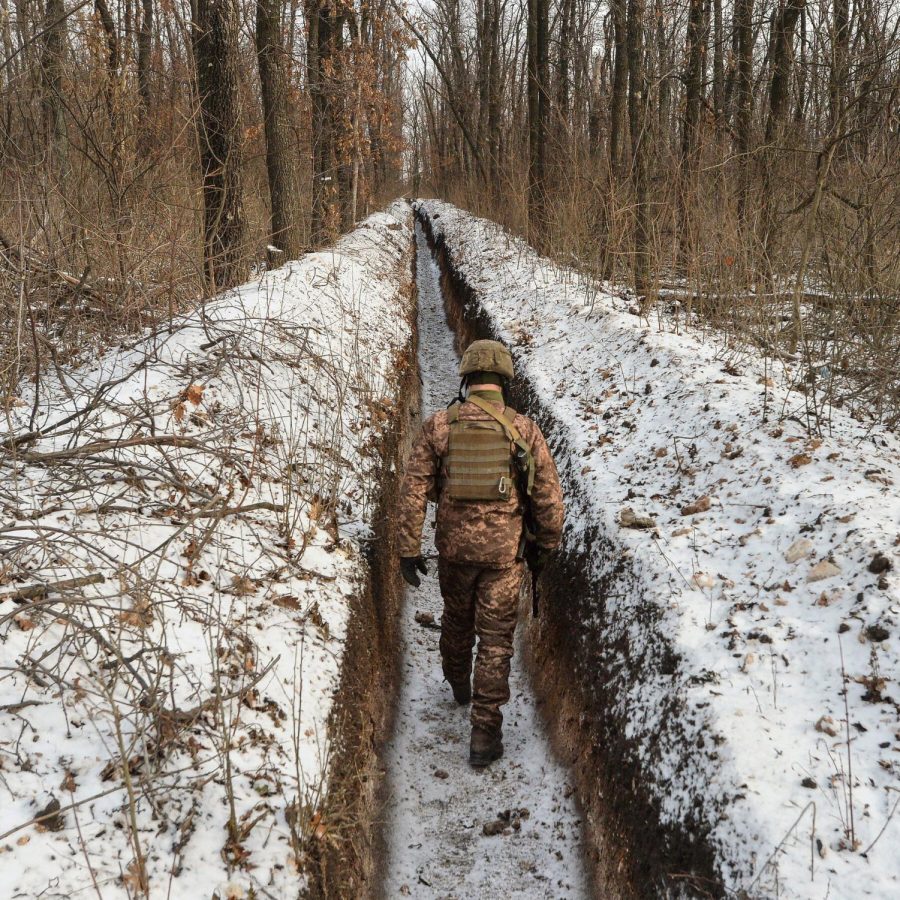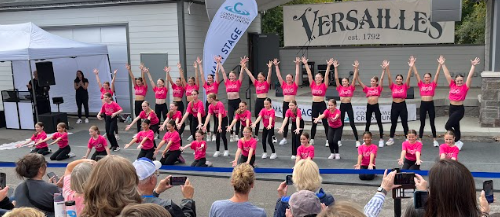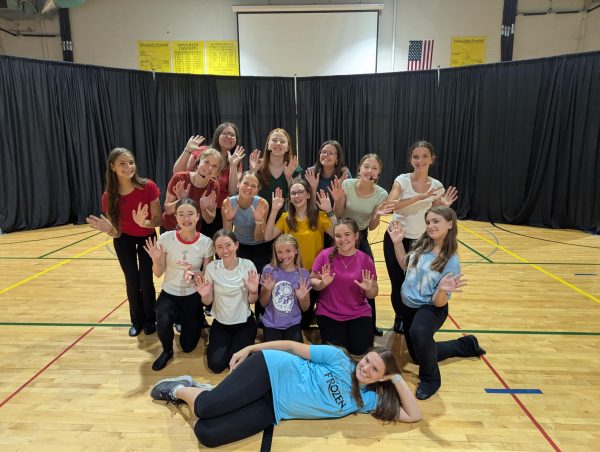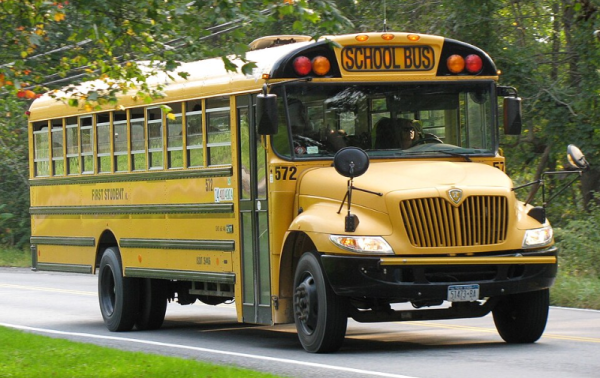Russia’s Rushing into Ukraine!
Summary of the ongoing situation between Ukraine, the NATO nations, and Russia.
Ukrainian soldier pacing the trench carved along the line of contact in the separatist held Donetsk region.
Following the military build-up of Russian troops on Ukrainian borders, concerns of international conflict are spreading across the globe. It’s showing signs of the events that cascaded from appeasement to conflict in World War II, but now Russia’s taking the stage against European world powers.
Tensions amongst the countries span back to the 1940s, following the defeat of Nazi Germany. Misplaced distrust between both the United States and the Soviet Union led the world from World War II into what we knew as the Cold War. While the Cold War never officially began until the formation of the North Atlantic Treaty Organization or NATO, the intelligence conflict between the United States and Russia has been going on since the first World War when the original Russian monarchs fell.
The end of the Cold War followed the downfall of the Soviet Union and amid their collapse European nations liberated and divided many former Soviet States into regions such as Bosnia, Georgia, Serbia, Croatia, etc. By the time the Iron Curtain fell, Russia was forced into taking on a more capitalist economy and a more democratic government, but former Soviets had already begun to flood the government. Amongst them was Vladimir Putin, a KGB intelligence officer, and career politician, who intended to reinstate Russia’s former glory.
Now, about 30 years later, Putin has taken complete control of the Russian government and established a chokehold on Eastern Europe by claiming former Soviet states, forcefully or not. Now he’s set eyes on Ukraine with a show of military force around their borders, and the true nature of “President” Putin’s plan is beginning to show.
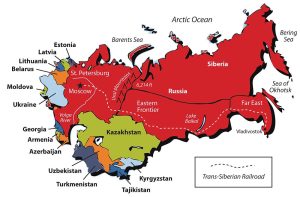
So far there’s no way to tell quite what Russia is planning, but we can still see fragments of the puzzle, and so far they paint an increasingly concerning picture:
- Build up of approximately 100,000 Russian troops
- A string of Military exercises from Belarus around to Moldova
- The Kremlin’s unwinnable ultimatum
- President Putin’s goal to achieve “unity” of the former Soviet states
- The recently built Nord Stream 2 pipeline
- Propaganda in the Russian media demonizing NATO forces
The Kremlin’s Ultimatum:
Following weeks of high tension between Eastern Europe and Russia, as well as some diplomatic meetings, Kremlin officials sat down with not only the US but NATO and OSCE representatives in Geneva to address some security demands. Most of these demands were proposed by Moscow back in December 2021 in the form of two different draft agreements. Amongst these demands was Russia’s main focus, their ultimatum, that Ukraine is barred from joining NATO’s ranks as a military ally.
In doing so, they put the main members of NATO in a tough spot. They can either choose to bar Ukraine and risk both political failure at home and fail to maintain NATO’s open membership policy, or they can refuse to bar Ukraine and fuel Russian propaganda. These Ukrainian relations with NATO dominated all the rounds of discussion, with many Kremlin officials insisting that Ukraine’s future status with NATO remains their top priority, maintaining with Putin’s belief that Russians and Ukrainians are “one people.”
Ever since Russia annexed and claimed control over the Island of Crimea in 2014, Russia’s urged questions over Ukraine’s statehood and sovereignty, with Putin writing, “I am confident that true sovereignty of Ukraine is possible only in partnership with Russia.”
Following the talks and subsequent denial of the Kremlin’s radical demands, their military made moves to surround the Russian-Ukrainian border spanning from Belarus in the north, around through Russia, down towards the Island of Crimea, and Ukraine’s neighboring Baltic State Moldova.
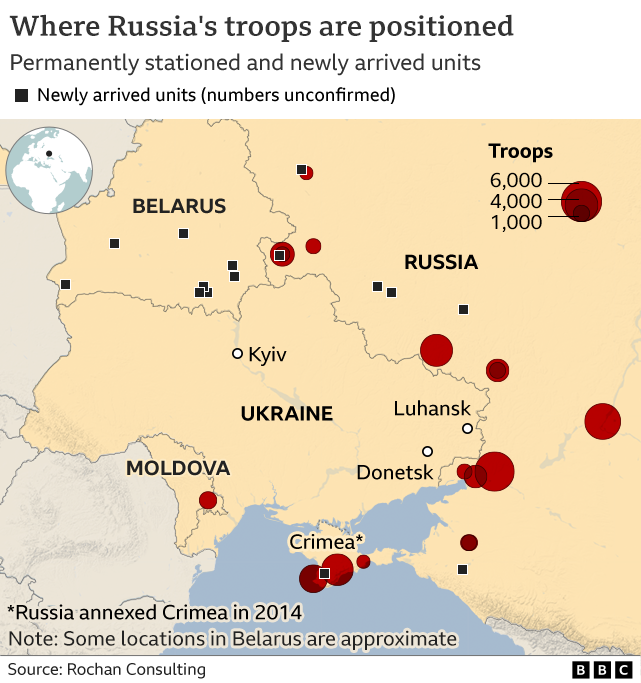
German-Russian Gas Pipeline:
Following discussions between Western Countries and the NATO representatives, questions were soon raised over the 1,200 km (745-mile) gas pipeline spanning from Greifswald, Germany to Ust-Luga, Russia. The long pipeline travels through the Baltic Sea, and its primary goal was to double the amount of natural gas exchange between Russia straight into Germany. Upon the pipeline’s completion in September 2021, it was estimated that the pipeline could transport approximately 55 billion cubic meters of natural gas, which makes up only a tenth of Russia’s yearly total.
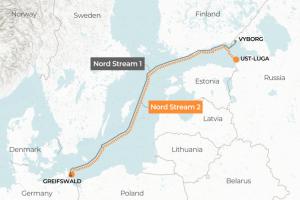
The pipeline was a multi-billion dollar expenditure, costing around €10 billion (11.3 billion USD). Most of the funds came largely from the Russian state-controlled gas firm Gazprom, but some costs fell on private business in Germany.
This leaves questions and clear controversy amongst the European nations, who have begun asking where Germany’s allegiance will fall. In response, Germany quickly shut down both Nord Stream 1 and 2, cutting off Russian gas flow to Europe, showing that they stand in solidarity with Europe and NATO’s members.
As a result, the view of the pipeline has been shifted from a liability to a key bargaining chip to use against Moscow. This leaves Russia forced to send any resources through nations like the Ukraine, which relies on the pipeline industry. Following the United States’ vow to back Europe by bolstering its natural gas supply, Western nations are considering heavy sanctions that significantly decrease revenue gained by the Russian pipelines, showing that Europe doesn’t rely on energy from Russia.
With that said, if the pipeline were to remain shut the costs would still be significant for Europe, not just Russia. Europe is already struggling with soaring energy prices given the lower Russian gas supply, leaving Germany in critical need of natural gas with approximately 22.6% of energy consumption fueled by natural gas. (As stated by Germany’s Federal Ministry of Economic Affairs and Climate Action.)
Propaganda in the Russian Media:
While Western and Ukrainian media are depicting Russia as an aggressive and clearly imperialist nation, the Russian media is taking a different stance, depicting not only Europe but NATO as the aggressors. Sergey Karaganov, a notably influential and hawkish Russian scientist, has gone as far as to say that NATO is a “cancer” further stating that it’s better for the stand-off to take place now rather than allowing a “repeat of June 22, 1941” referring to the Nazi party’s initial invasion.
From what can be found both through the television and the Russian state social media, Telegram, Russia is implying that Ukraine is preparing an attack on the pro-Russian separatist occupying Ukrainian town Donetsk as reported by Russian News agency TASS. “Donetsk has been surrounded! Horlivka has been cut off! Ukrainian and NATO cyber troops have already begun a new war in Donbas,” read a headline in the tabloid Komsomolskaya Pravda.
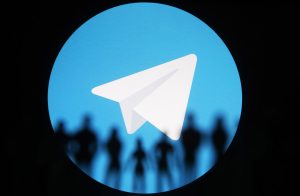
Some state-backed political analysts are taking to Telegram, the Russian-made social media platform. Amongst them include Economist and political analyst Yevgeny Satanovsky who recently wrote, “The background noise about the Russian invasion of Ukraine, which is about to begin, is intended not so much to save it (Ukraine) from the evil Muscovite government, but to disguise its own preparation for aggression.” He goes on to compare Ukraine to a grazing cow that both the United States and Germany are trying to milk, whereas Russia hopes to let it graze as long as Russia is left alone.
There are also people like talk show host Vladimir Solovyov, one of the best-known faces on Russian television and media, who states that Russia could destroy Ukraine without even crossing its borders, but it chooses not to. “We have enough firepower for the full annihilation of the Ukrainian military infrastructure without an incursion of forces into Ukrainian territory. But we aren’t preparing to do this,” Solovyov said.
It’s clear that as the tension winds up and conflict progresses, the Russian government intends to divert attention to the wrongdoings of NATO in hopes to make the organization out as the aggressor claiming the Baltic States through the organization.
Remarks:
This conflict is far from over, and concerns about whether war is going to break out are still in the air. What is rather blatantly clear is that NATO and Russia are at a standstill, and whoever makes the next drastic move could push our nations into a third World War.
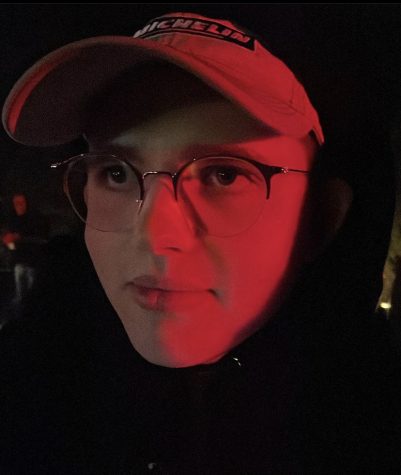
Blake Heller is a senior and it's his fourth and final year on The Jacket Journal staff. He values a reasonable two-way debate, but one thing Blake really...

